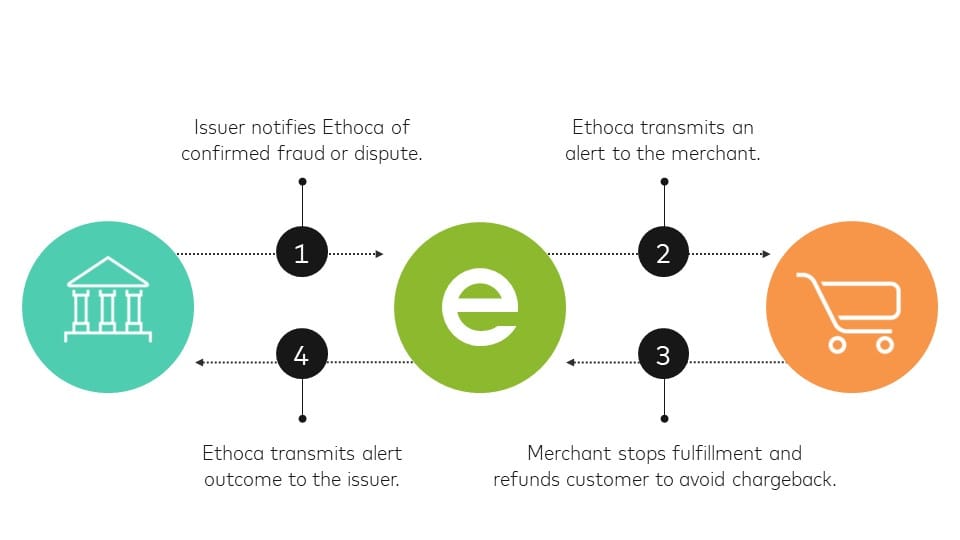
SuperPay helps cafe owners like yourself get paid as quickly as possible. Choose our platform to power your payments & billing.
Expanding a cafe business regionally can be an exciting and profitable venture. By reaching out to new markets and tapping into different customer bases, a cafe owner can significantly increase their business's reach and revenue. However, expanding regionally requires careful planning and strategic execution.
In this blog post, we will explore the various aspects involved in expanding a cafe business regionally. From understanding the basics of regional expansion to conducting market research, developing a strategic expansion plan, implementing the plan, and monitoring and adapting to regional dynamics, we will cover all the essential steps you need to take for a successful expansion.
First, we will delve into the importance of conducting thorough market research before expanding your cafe regionally. Understanding the market dynamics, customer preferences, and competition in new regions is crucial to make informed decisions and tailor your offerings to meet the demands of the local clientele. We will also discuss effective tools and methods for conducting market research and how to analyze and implement the findings into your expansion strategy.
Next, we will guide you through the process of developing a strategic expansion plan. This involves identifying potential regions for expansion, creating a detailed business plan that outlines your objectives, target market, financial projections, and operational strategies, and securing the necessary funding to support your expansion efforts.
Once you have formulated your expansion plan, we will discuss the implementation phase. Establishing operations in new regions requires careful planning and execution. We will explore the key considerations, such as finding suitable locations, hiring and training staff, and adapting your menu and offerings to cater to the local tastes and preferences. Additionally, we will emphasize the importance of marketing your cafe effectively in new regions and building strong relationships with the local communities to establish a loyal customer base.
Lastly, we will address the ongoing aspect of monitoring and adapting to regional business dynamics. Setting up a system for regular monitoring of your new locations, gathering feedback from customers, and making necessary adjustments to your operations will ensure sustained growth and success in the new regions.
Expanding a cafe business regionally can be a challenging process, but with the right knowledge and strategies, it can also be a rewarding endeavor. So, whether you are a cafe owner looking to expand your business or an aspiring entrepreneur considering regional expansion, this blog post will provide you with valuable insights and practical tips to help you navigate the exciting journey of expanding your cafe business regionally. Stay tuned for our upcoming articles, where we will dive deeper into each step of the expansion process.
Understanding the Basics: What It Means to Expand Regionally
Expanding a cafe business regionally refers to the process of opening new locations or branches of your cafe in different geographical areas beyond your current operating region. It involves extending your reach and tapping into new markets, attracting a diverse customer base, and increasing your business's overall footprint.
When you decide to expand regionally, you are essentially taking your successful cafe concept and replicating it in new locations. This expansion can be within the same city, across cities within a region, or even across different regions or countries. Regardless of the scale, the key objective is to leverage your existing brand, reputation, and operational expertise to establish a presence in new areas.
Regional expansion offers numerous benefits for cafe owners. Firstly, it allows you to capture a larger market share and increase your customer base. By opening new locations in different regions, you can cater to a broader range of customers and attract individuals who may not have access to your cafe in its current location. This expansion can lead to a significant increase in revenue and profitability.
Furthermore, expanding regionally can enhance your brand recognition and credibility. By establishing a presence in multiple locations, you create a perception of a successful and trusted cafe brand. This can attract more customers, strengthen customer loyalty, and build a positive reputation in the industry.
Expanding regionally also opens up opportunities for economies of scale. With multiple locations, you can centralize certain operations and streamline processes, leading to cost savings and increased efficiency. Bulk purchasing, centralized marketing efforts, and shared resources can help optimize your business operations and improve overall profitability.
However, it is important to note that regional expansion also comes with its challenges. Opening new locations requires significant investment in terms of capital, resources, and manpower. It involves finding suitable locations, negotiating leases, hiring and training staff, and adapting to the local market dynamics. Additionally, managing multiple locations requires effective communication and coordination to ensure consistent quality and customer experience across all branches.
In the following sections, we will explore in detail the various aspects involved in expanding your cafe business regionally. From conducting market research to developing a strategic expansion plan, implementing the plan, and monitoring and adapting to regional dynamics, we will provide you with comprehensive insights and practical tips to help you navigate the exciting journey of expanding your cafe business regionally.
Market Research for Regional Expansion
Market research plays a crucial role in the successful expansion of a cafe business regionally. It provides valuable insights into the new market, helps you understand the local customer preferences, identifies potential competitors, and enables you to make informed decisions throughout the expansion process. In this section, we will explore the importance of conducting market research and discuss the tools and methods you can utilize for effective research.
Why Conducting Market Research is Important
Understanding the Local Market: Conducting market research allows you to gain a deep understanding of the local market dynamics, including consumer behavior, preferences, and trends. It helps you identify the target audience and tailor your offerings to meet their specific needs, ensuring a higher chance of success in the new region.
Identifying Competition: Market research helps you identify existing and potential competitors in the new region. By analyzing their strengths, weaknesses, pricing strategies, and customer base, you can develop effective strategies to differentiate your cafe and gain a competitive advantage.
Assessing Demand and Market Potential: Market research helps you determine the demand for your cafe concept in the new region. By analyzing demographic data, economic indicators, and consumer trends, you can assess the market potential and estimate the expected customer base and revenue.
Refining Marketing and Branding Strategies: Through market research, you can gain insights into the local marketing channels, advertising preferences, and cultural factors that influence consumer behavior. This information can guide you in developing effective marketing and branding strategies that resonate with the target audience.
Tools and Methods for Effective Market Research
Surveys and Questionnaires: Conducting surveys and questionnaires can provide valuable feedback from potential customers in the new region. You can gather information about their preferences, expectations, and willingness to try your cafe concept.
Focus Groups: Organizing focus groups allows you to have in-depth discussions with a selected group of individuals who represent your target audience. This method provides qualitative insights into their perceptions, preferences, and suggestions.
Observation and Field Studies: By observing customer behavior and conducting field studies, you can gather firsthand information about the local market, competition, and consumer preferences. This method can provide valuable insights that may not be captured through surveys or questionnaires.
Secondary Research: Utilizing existing market reports, industry publications, government statistics, and other relevant sources can provide you with valuable data about the local market, demographics, economic indicators, and trends. This information can supplement your primary research efforts.
Competitor Analysis: Analyzing your competitors' websites, social media presence, customer reviews, and menu offerings can help you understand their strengths, weaknesses, and unique selling points. This analysis can guide you in positioning your cafe strategically.
In the next section, we will delve into analyzing and implementing the findings from your market research. This step is crucial in shaping your regional expansion strategy and ensuring that your cafe is well-positioned for success in the new market.
Developing a Strategic Expansion Plan
Developing a strategic expansion plan is a critical step in successfully expanding your cafe business regionally. This section will guide you through the key components of creating a comprehensive plan that outlines your objectives, target regions, financial projections, and operational strategies.
Identifying Potential Regions for Expansion
Market Analysis: Conduct a thorough analysis of potential regions by considering factors such as population demographics, economic indicators, competition, and consumer trends. Evaluate the demand for cafes and assess if there is a gap in the market that your cafe can fill.
Location Suitability: Evaluate the suitability of different locations within the potential regions. Consider factors such as accessibility, foot traffic, proximity to residential and commercial areas, and the presence of complementary businesses.
Legal and Regulatory Considerations: Research and understand the legal and regulatory requirements for opening a cafe in each potential region. This includes permits, licenses, health codes, zoning regulations, and any specific local regulations that may impact your operations.
Creating a Detailed Business Plan
Objectives and Goals: Clearly define your objectives for regional expansion. These may include increasing revenue, market share, brand recognition, or diversifying your customer base. Set specific, measurable, achievable, relevant, and time-bound (SMART) goals to guide your expansion efforts.
Target Market: Identify your target market in each region by considering factors such as demographics, consumer behavior, and preferences. Tailor your offerings to meet the specific needs and preferences of the local customers.
Financial Projections: Develop detailed financial projections for each potential region, including revenue forecasts, costs, and profitability analysis. Consider factors such as rent, utilities, staffing, inventory, marketing expenses, and any additional costs specific to each region.
Operational Strategies: Outline the operational strategies for your expanded locations. Consider aspects such as staffing, supply chain management, menu development, pricing, customer service, and quality control. Ensure that these strategies align with your overall brand identity and customer experience.
Securing Funding for Expansion
Financial Assessment: Conduct a comprehensive assessment of your financial capabilities and determine the amount of funding required for regional expansion. Consider both upfront costs and ongoing operational expenses.
Internal Funding: Assess whether you have sufficient internal funds to support the expansion. This may include reinvesting profits, utilizing personal savings, or seeking financial contributions from partners or shareholders.
External Funding Options: Explore external funding options such as bank loans, small business grants, venture capital, or crowdfunding. Research the requirements and terms of each funding source and prepare a compelling business case to secure the necessary capital.
Financial Projections and Business Plan: Prepare a solid business plan and financial projections to present to potential investors or lenders. Clearly articulate the growth potential, profitability, and return on investment (ROI) they can expect from supporting your regional expansion.
In the next section, we will focus on implementing your expansion plan, including establishing operations in new regions, effectively marketing your cafe, and building relationships with local communities.

Implementing Your Expansion Plan
Implementing your expansion plan is a crucial phase in expanding your cafe business regionally. This section will guide you through the key steps involved in successfully executing your plan, including establishing operations in new regions, effectively marketing your cafe, and building relationships with local communities.
Establishing Operations in New Regions
Location Selection: Identify suitable locations within the new regions based on your market research and business plan. Consider factors such as foot traffic, accessibility, rental costs, and proximity to your target audience.
Lease Negotiation: Negotiate lease terms with property owners or real estate agents. Ensure that the lease agreements align with your business requirements, including lease duration, rent structure, maintenance responsibilities, and any necessary permits or licenses.
Staffing and Training: Recruit and train a competent team for your new locations. Ensure that your staff members are well-versed in your cafe's values, service standards, menu offerings, and operational procedures. Provide comprehensive training to maintain consistency across all branches.
Supply Chain Management: Establish relationships with local suppliers to ensure a smooth and efficient supply chain for your new locations. Consider factors such as quality, pricing, and timely delivery to maintain consistency in your offerings.
Marketing Your Cafe in New Regions
Localized Marketing Strategy: Develop a localized marketing strategy for each new region. Tailor your marketing efforts to target the specific demographics and preferences of the local customers. Utilize various channels such as social media, local advertising platforms, community events, and partnerships with local businesses.
Brand Awareness Campaigns: Launch brand awareness campaigns to introduce your cafe to the new market. Utilize online and offline marketing techniques to create buzz, generate interest, and attract customers to your new locations.
Promotions and Special Offers: Offer promotions and special deals to entice the local customers and encourage them to visit your cafe. Consider discounts, loyalty programs, limited-time offers, and collaborations with local influencers or organizations to drive foot traffic and increase brand visibility.
Online Presence: Develop a strong online presence for your new locations. Create dedicated social media accounts, update your website with location-specific information, manage online reviews and ratings, and engage with your audience through online platforms. Utilize search engine optimization (SEO) techniques to improve your cafe's visibility in local searches.
Building Relations with Local Communities
Community Engagement: Engage with the local community by participating in local events, sponsoring community initiatives, or hosting charity events. This helps build goodwill, fosters positive relationships, and establishes your cafe as an integral part of the community.
Partnerships and Collaborations: Seek partnerships and collaborations with local businesses, organizations, or influencers to cross-promote your cafe and tap into their existing customer base. This can help expand your reach and attract new customers.
Customer Feedback and Satisfaction: Prioritize customer feedback and satisfaction in your new locations. Implement mechanisms to gather feedback, address concerns promptly, and continuously improve your offerings based on customer preferences and suggestions.
Local Cultural Sensitivity: Respect and adapt to the local culture and customs of the new regions. This includes aspects such as menu customization, incorporating local ingredients or flavors, and respecting local traditions.
By effectively implementing your expansion plan, you can establish a strong presence in new regions, attract a loyal customer base, and drive the success of your cafe business. In the next section, we will discuss the importance of monitoring and adapting to regional business dynamics to ensure sustained growth.
Monitoring and Adapting to Regional Business Dynamics
Monitoring and adapting to regional business dynamics is a crucial aspect of expanding your cafe business regionally. This section will guide you through the steps involved in setting up a system for regular monitoring, gathering feedback from customers, and making necessary adjustments to your operations to ensure sustained growth in new regions.
Setting Up a System for Regular Monitoring
Key Performance Indicators (KPIs): Define relevant KPIs to measure the success of your new locations. This may include metrics such as sales revenue, customer footfall, average ticket size, customer satisfaction scores, and employee productivity. Regularly track and analyze these KPIs to assess the performance of each location and identify areas for improvement.
Data Collection and Analysis: Utilize technology tools and systems to collect and analyze data from your new locations. This may include point-of-sale (POS) systems, customer feedback platforms, and employee performance tracking software. Use this data to identify trends, patterns, and opportunities for growth.
Competitor Analysis: Continuously monitor and analyze the activities and strategies of your competitors in the new regions. Stay updated on their offerings, pricing, marketing campaigns, and customer feedback. This information can help you benchmark your performance and identify areas where you can differentiate and improve.
Adapting Operations Based on Regional Feedback
Customer Feedback: Regularly seek feedback from customers in the new regions through surveys, comment cards, online reviews, and social media interactions. Pay attention to their suggestions, concerns, and preferences. Incorporate customer feedback into your decision-making process and make necessary adjustments to your offerings, pricing, or service standards.
Menu Optimization: Analyze the performance of your menu items in each location and identify the dishes that resonate well with the local customers. Consider customizing your menu based on regional preferences or introducing seasonal specials to cater to local tastes.
Operational Efficiency: Continuously assess and improve the efficiency of your operations in the new regions. Identify bottlenecks or areas of improvement in processes such as inventory management, staff scheduling, and customer service. Implement changes to streamline operations and enhance the overall customer experience.
Marketing Strategy Refinement: Regularly review the effectiveness of your marketing strategies in the new regions. Analyze the performance of different marketing channels, promotions, and campaigns. Make necessary adjustments to your marketing approach based on the response and feedback from the local customers.
Sustaining Growth in New Regions
Consistency and Quality Control: Ensure consistent quality and customer experience across all your locations. Implement standardized operating procedures, training programs, and quality control measures to maintain your brand reputation and customer satisfaction.
Staff Development: Invest in the development and training of your staff members in the new regions. Continuously provide them with opportunities to enhance their skills, product knowledge, and customer service abilities. Motivate and empower your employees to deliver exceptional service.
Community Engagement: Continue building strong relationships with the local communities in your new regions. Participate in local events, support community initiatives, and be an active member of the community. This fosters loyalty, word-of-mouth marketing, and a positive brand image.
By monitoring regional business dynamics and adapting your operations based on feedback and market trends, you can sustain growth and ensure the long-term success of your cafe business in new regions. Remember, staying agile and responsive to the needs of the local customers is key to thriving in a competitive market.


